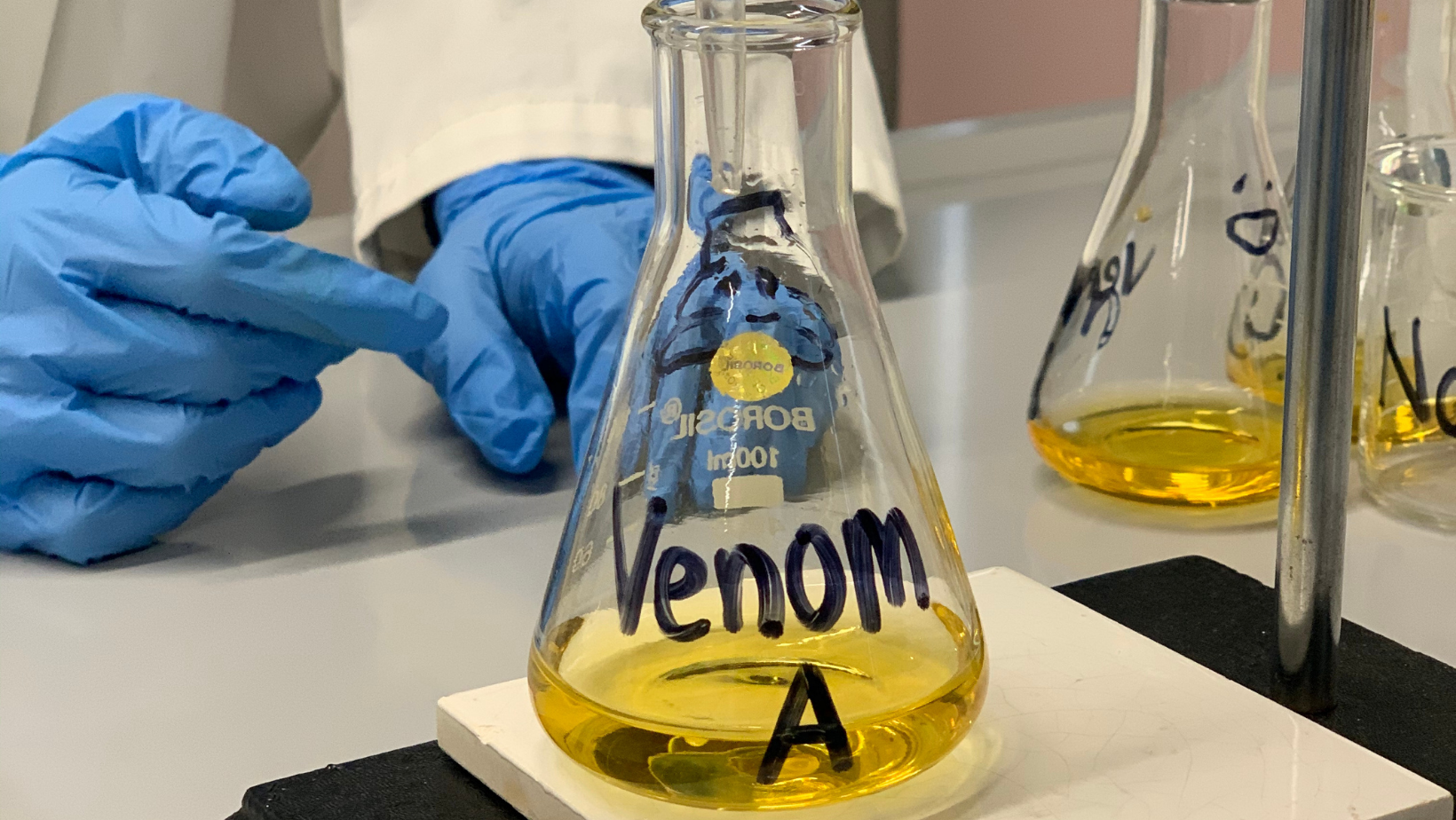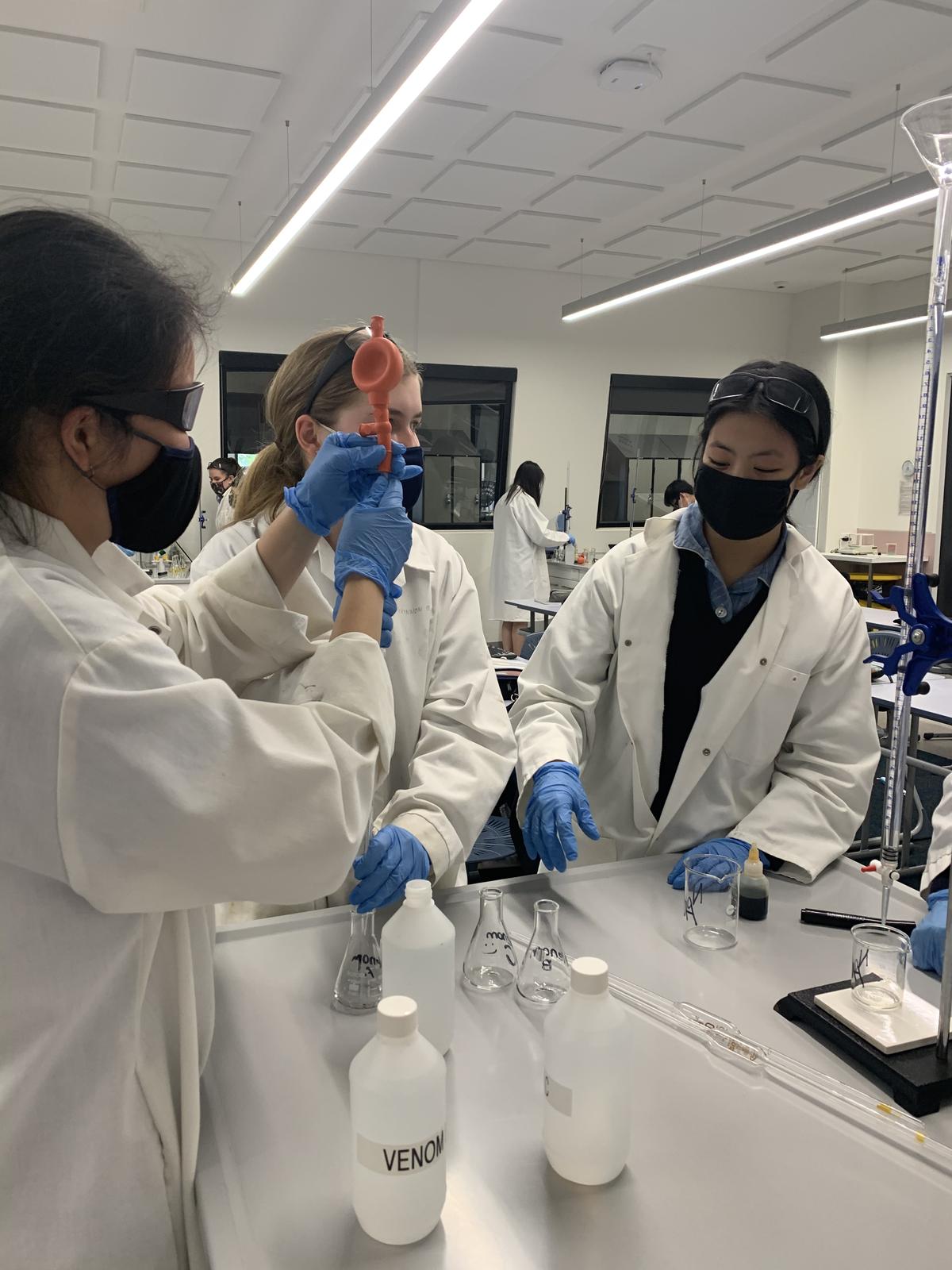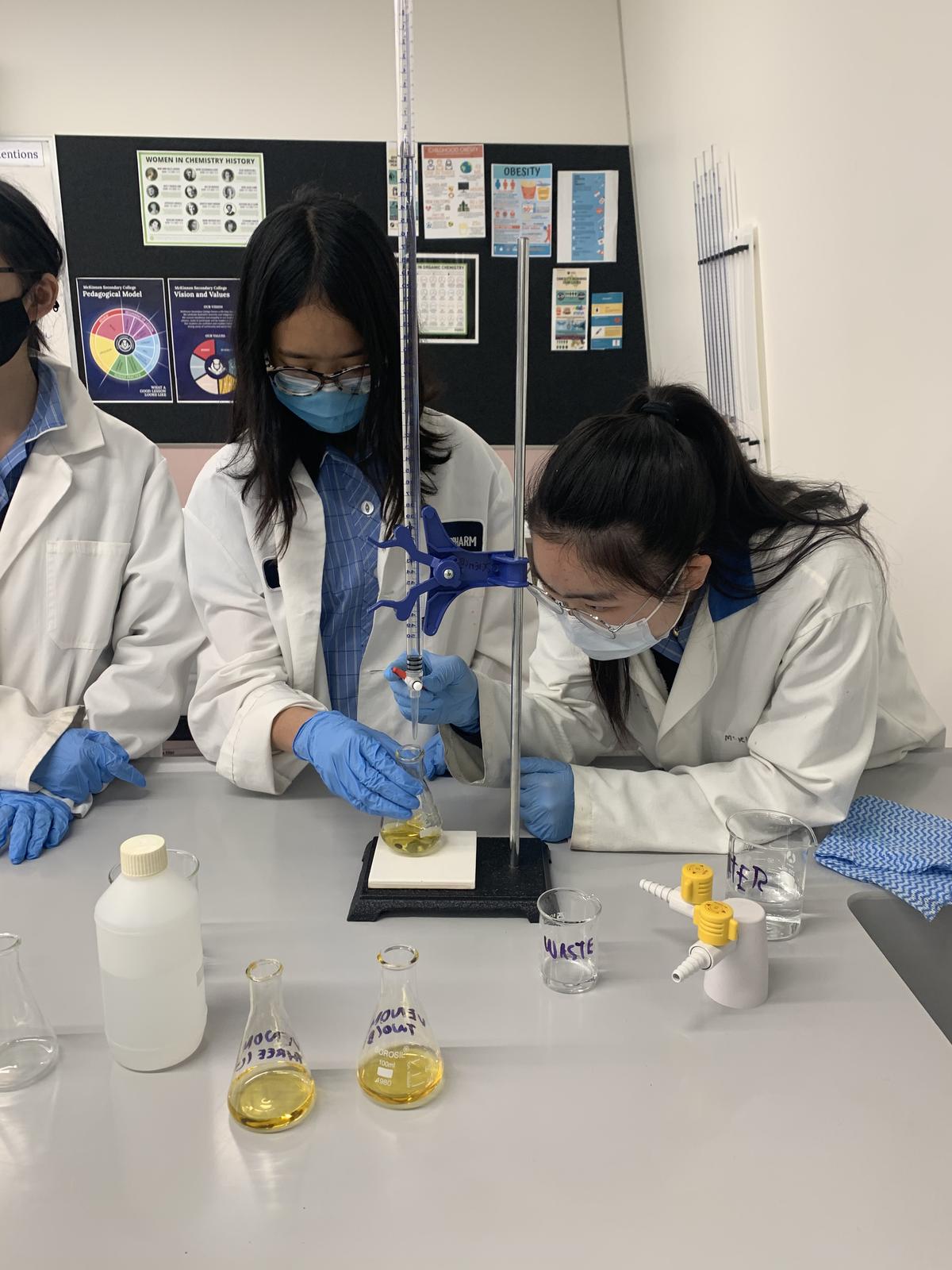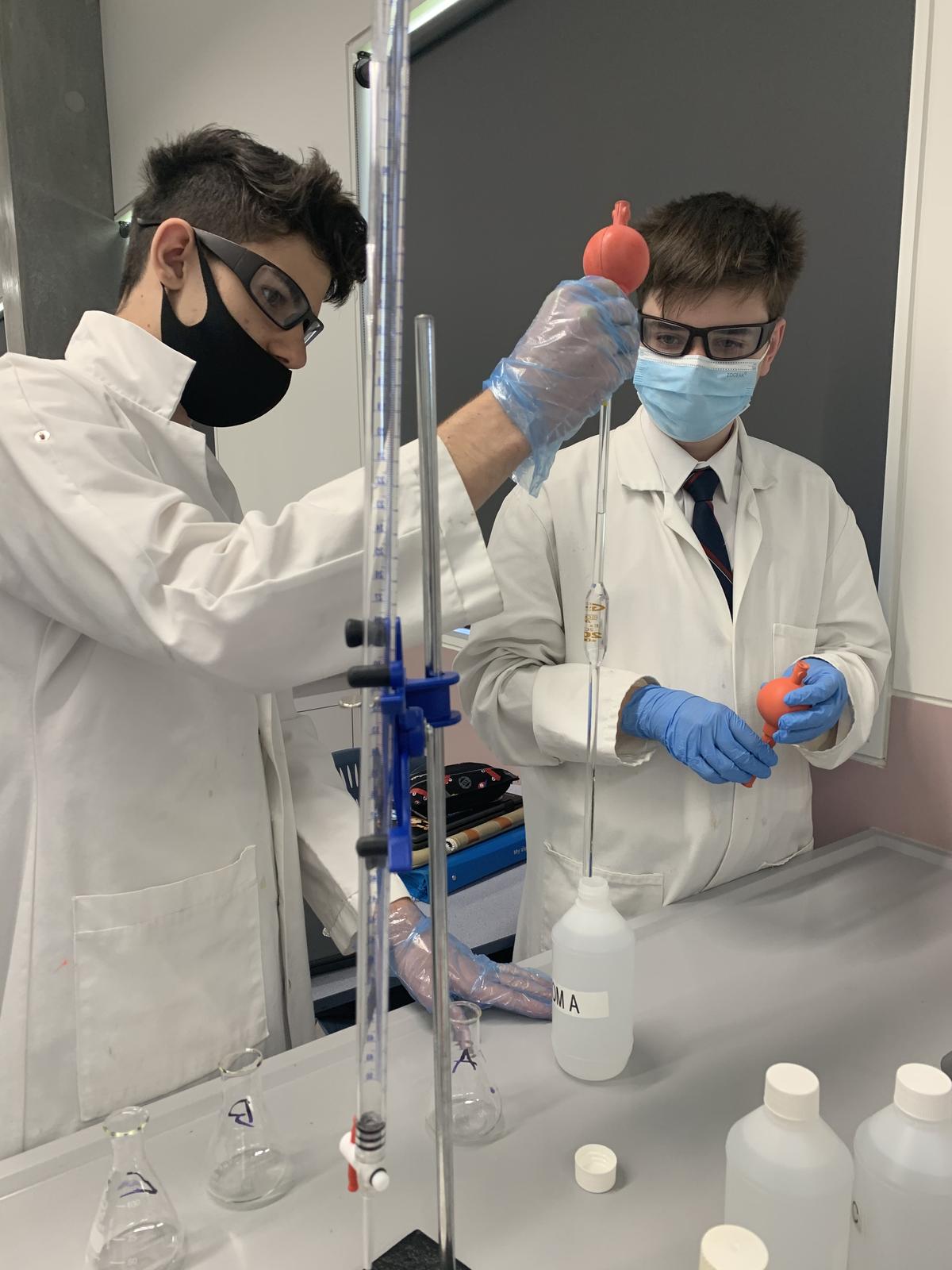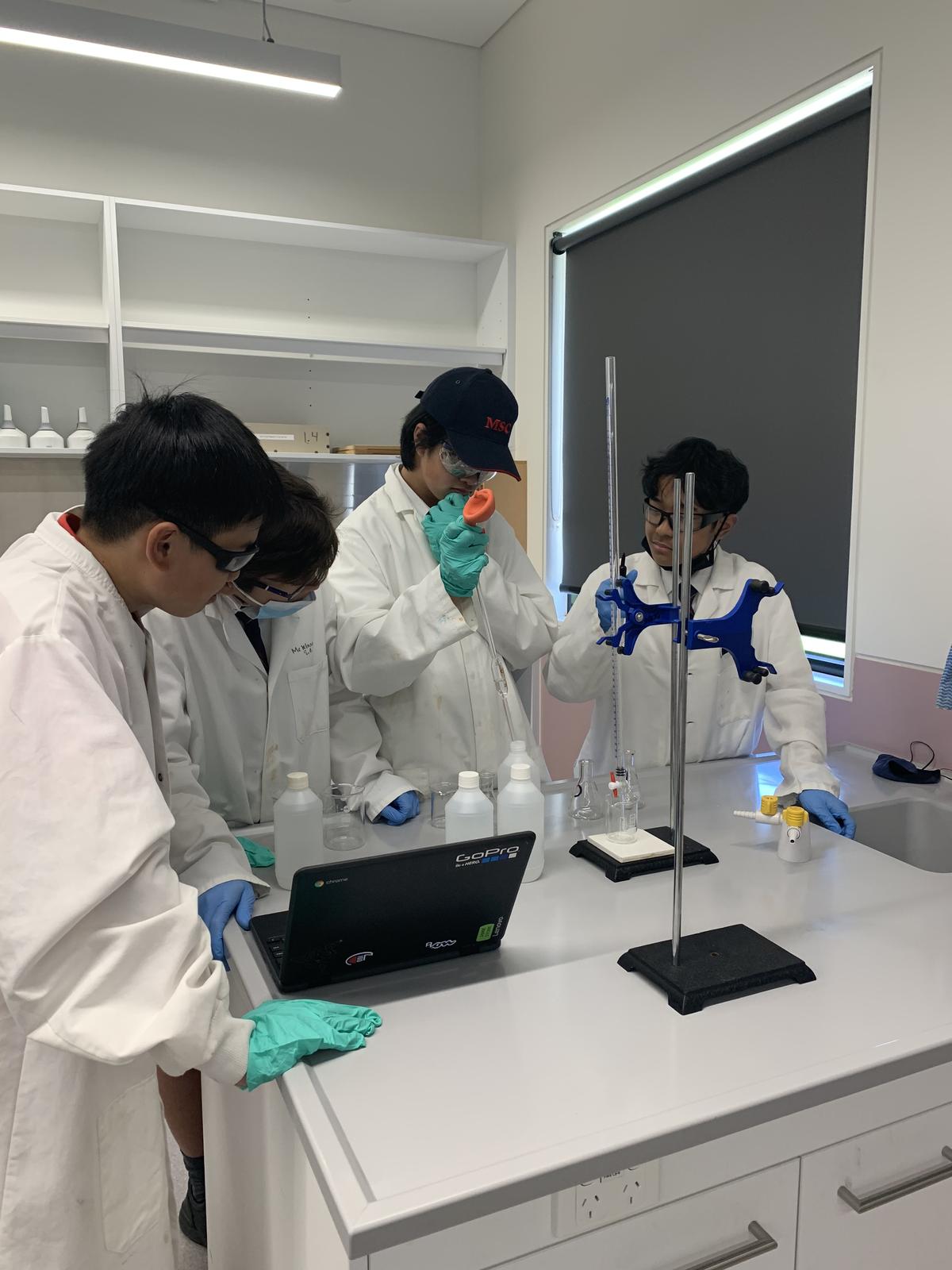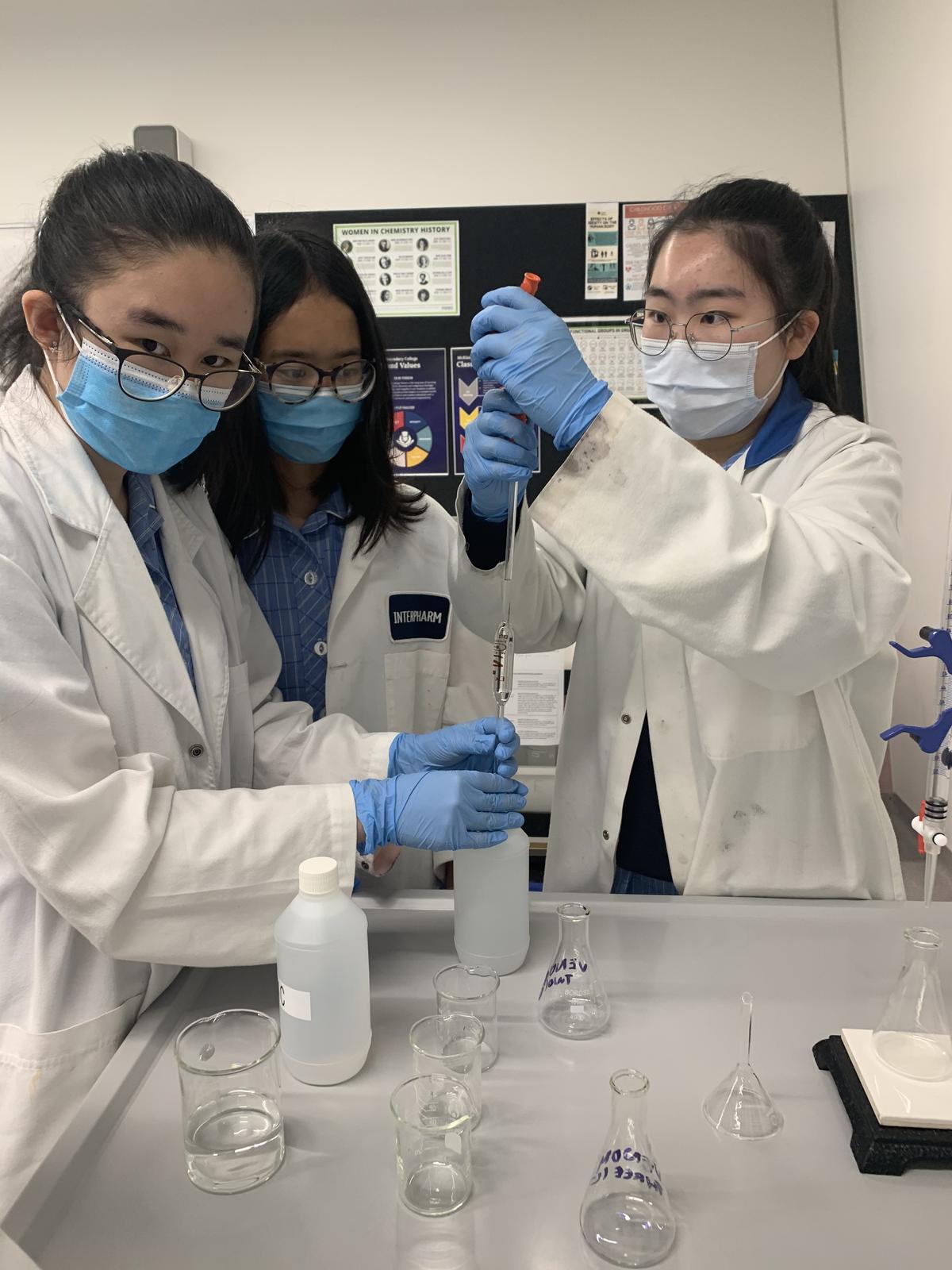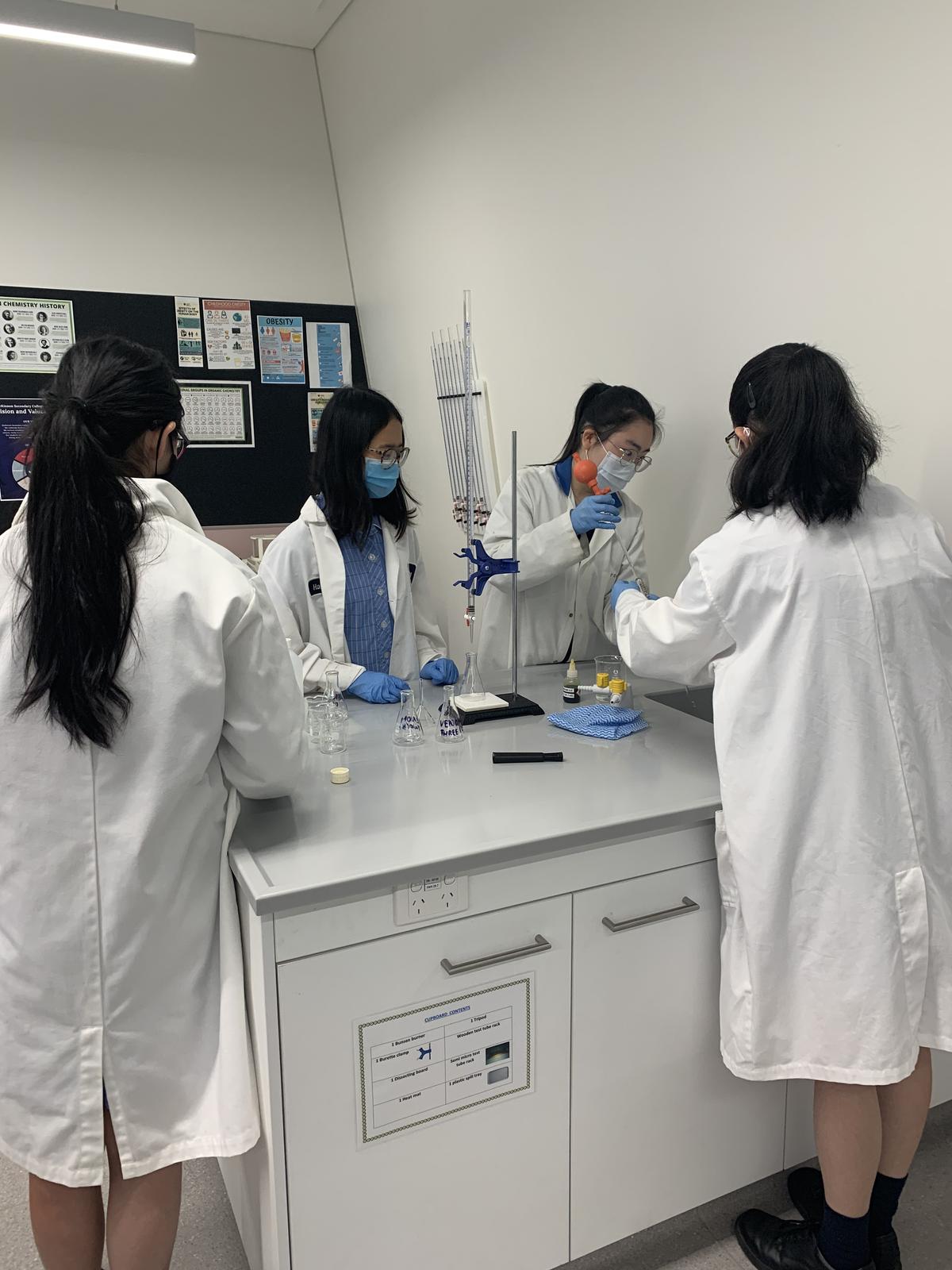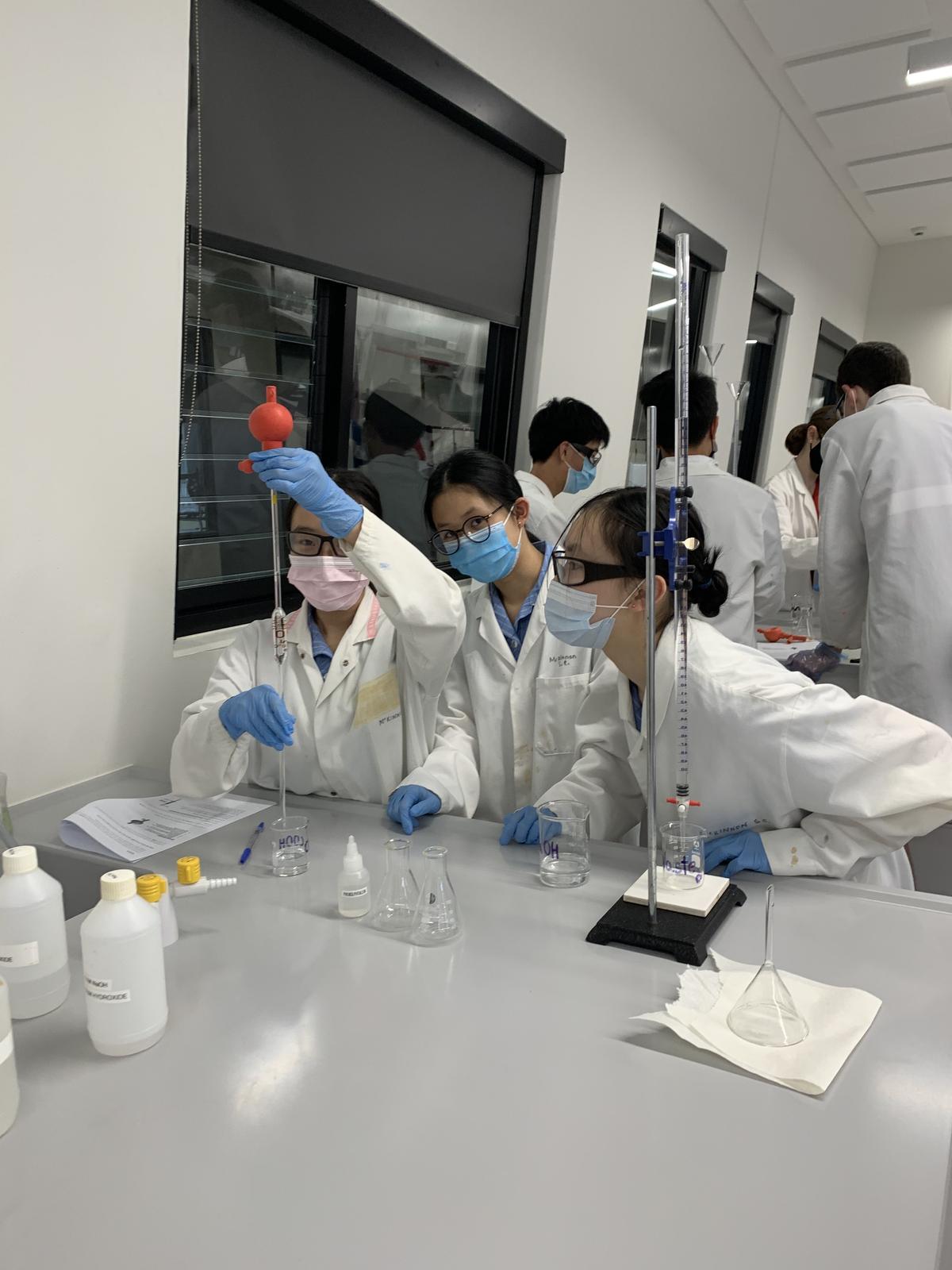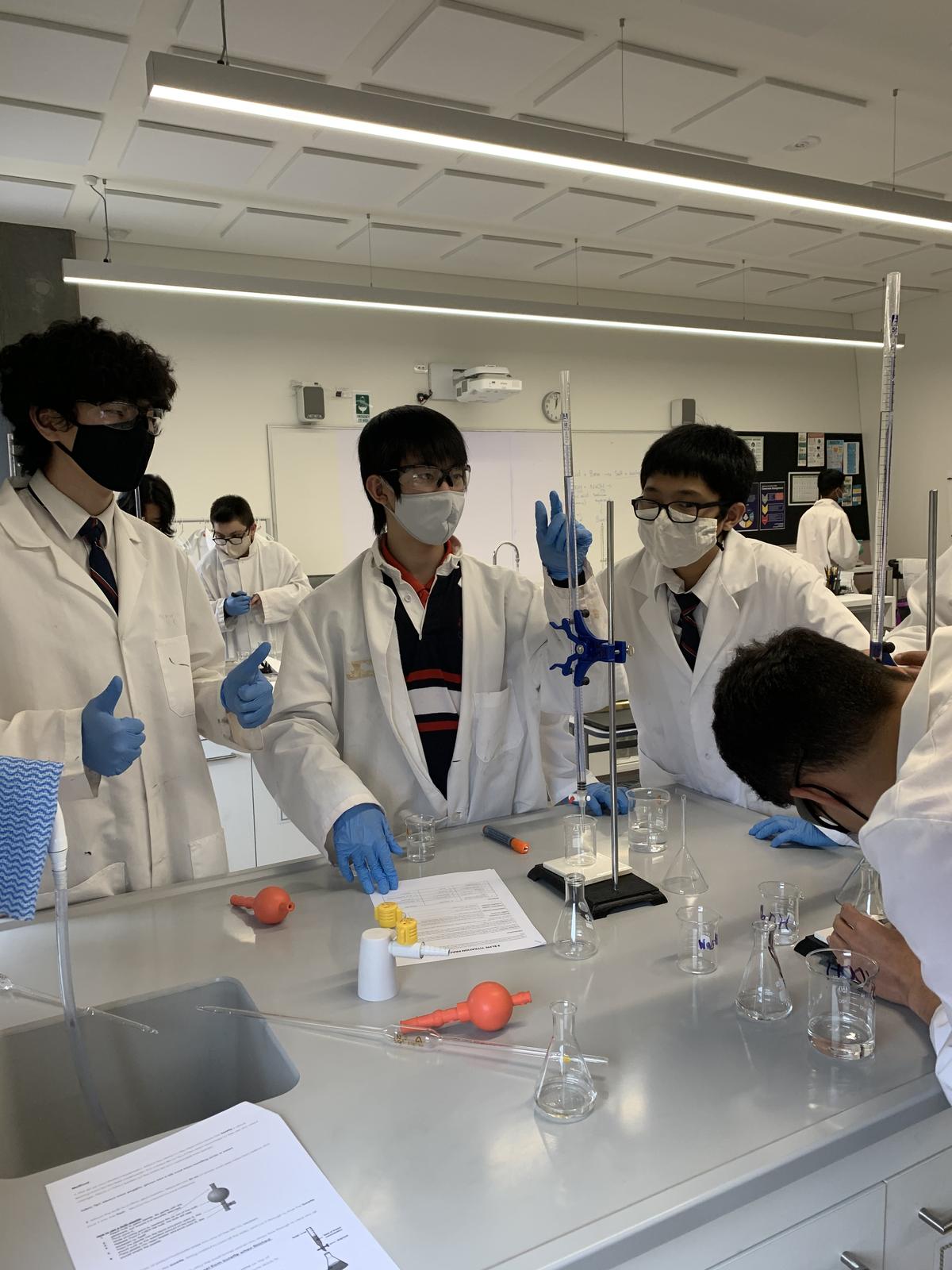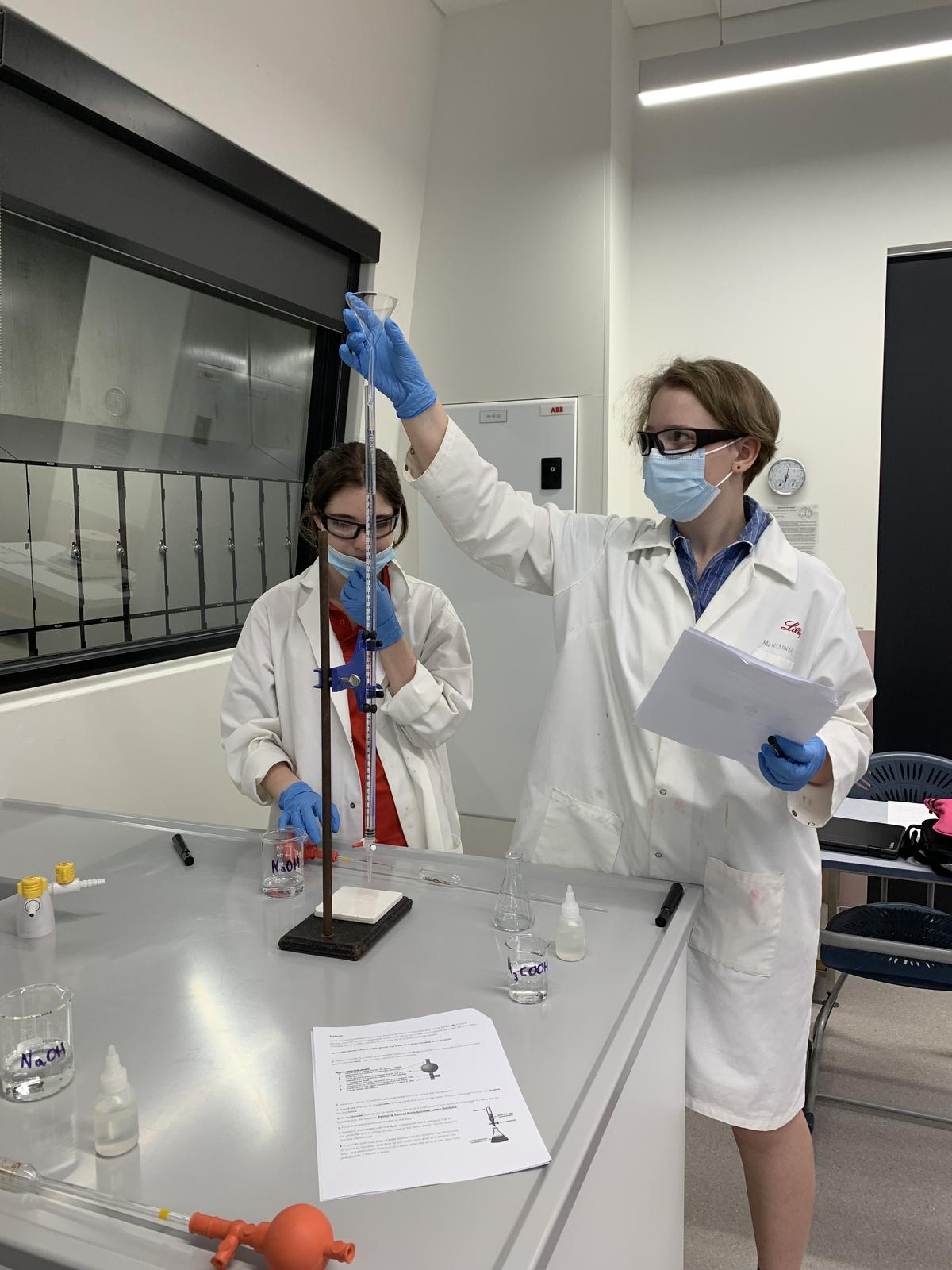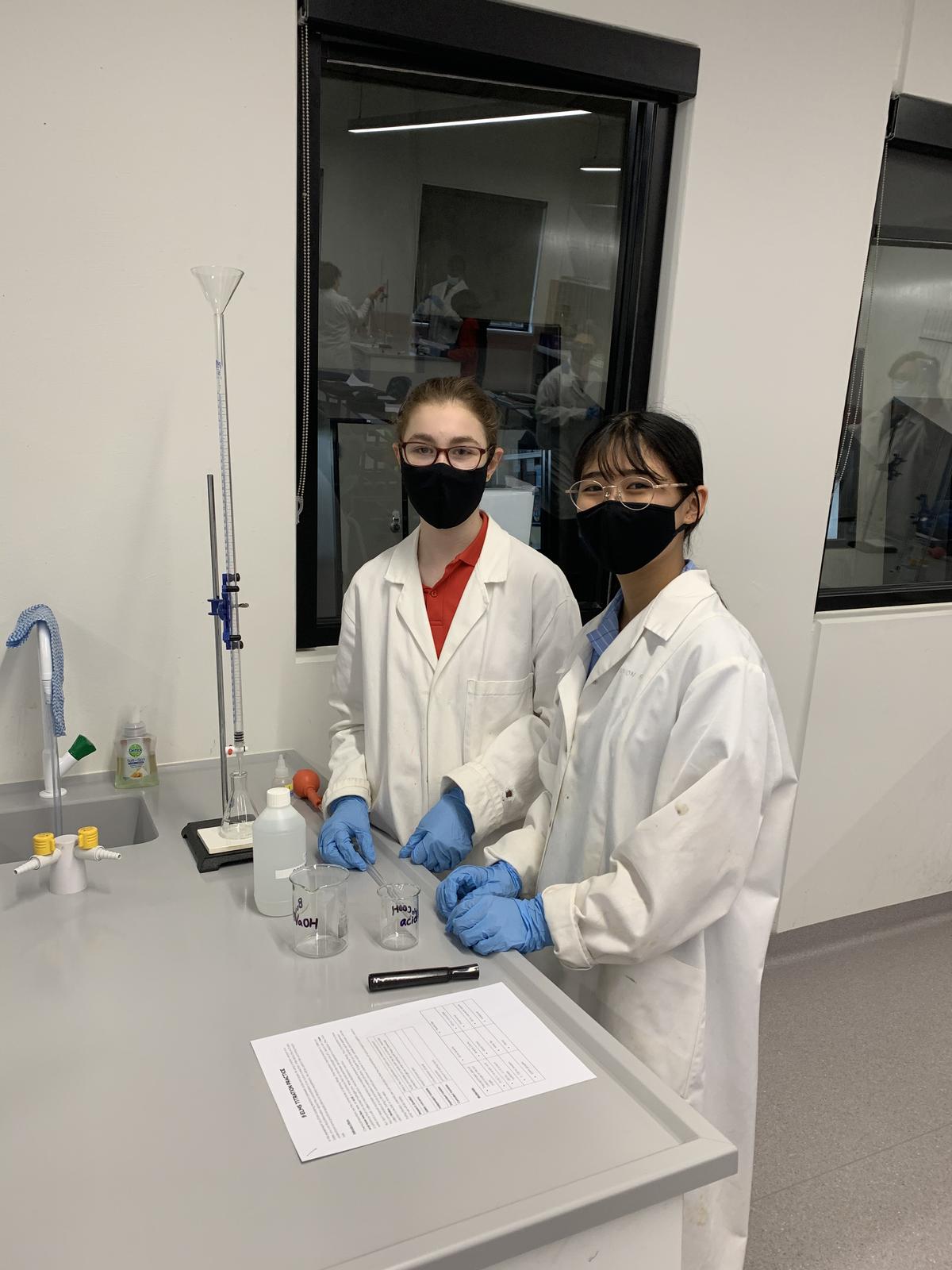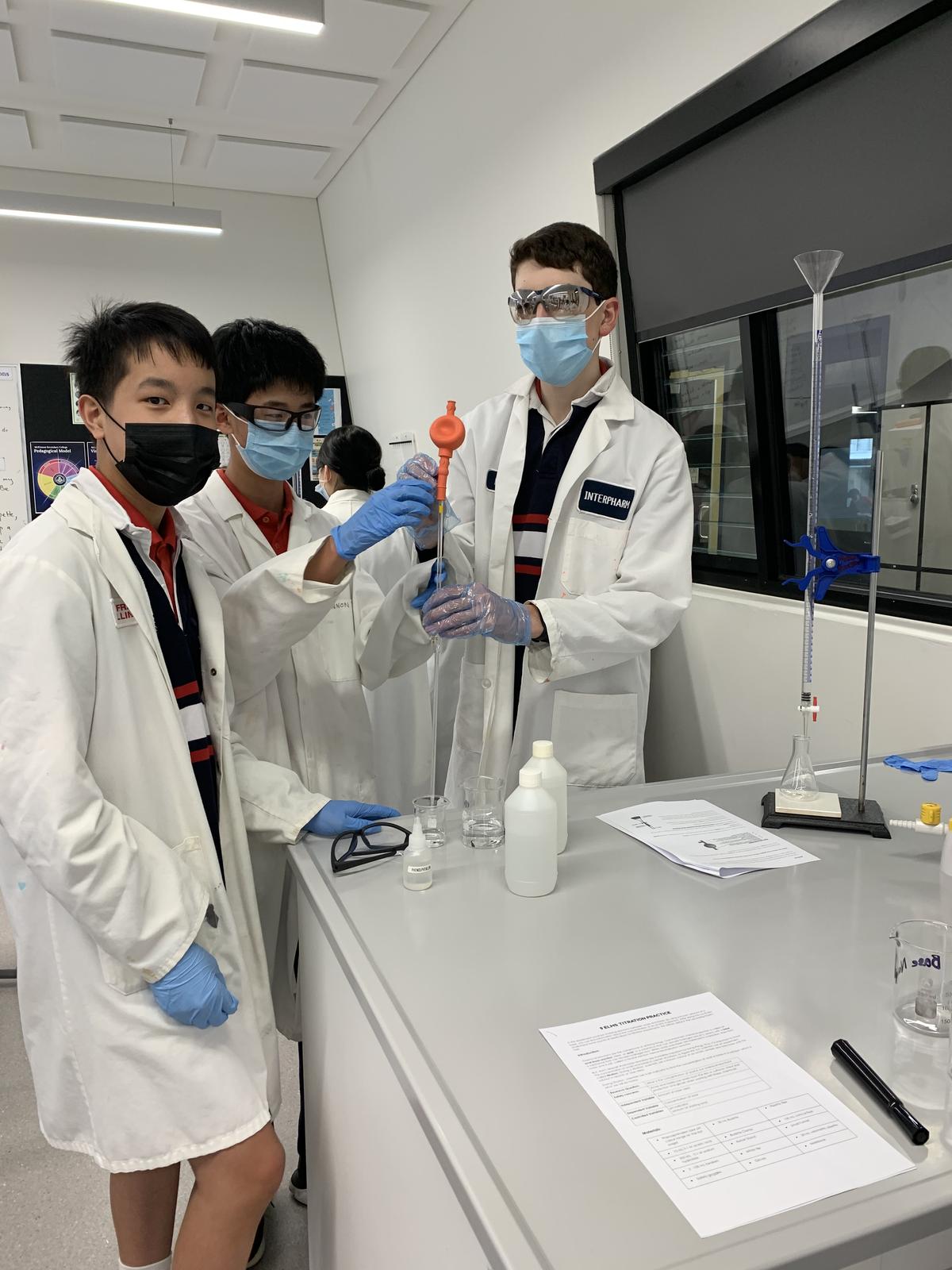SCIENCE
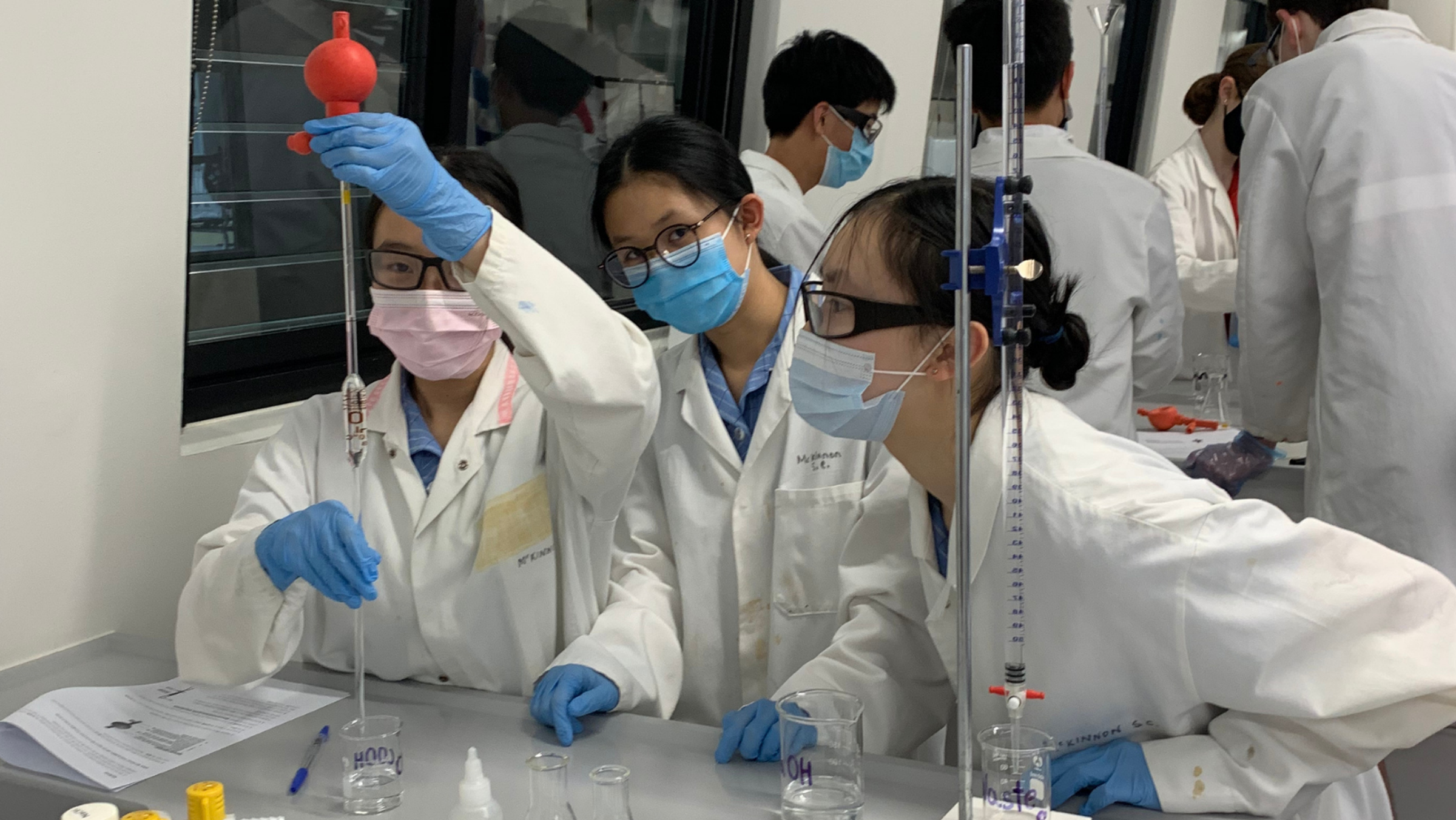
YEAR 9 ELMS INVESTIGATION: USING AN ACID-BASE TITRATION TO FIND THE UNKNOWN CONCENTRATION OF ANT VENOM
The technique known as titration is an analytical method commonly used in chemistry for determining the quantity or concentration of a substance in a solution. In a titration, an analyte - the substance whose quantity or concentration is to be determined - is reacted with a carefully controlled volume of solution of accurately-known concentration called a standard solution. The standard solution is usually added to the solution containing the analyte by means of a buret, which accurately measures the volume of solution.
The Year 9 ELMS students were tasked with the challenge of finding the concentration of three unknown ant venoms using an acid-base titration. They used 0.1M sodium hydroxide as the standard solution, which they carefully titrated into 20mL of the analyte solution (the ant venom) until the equivalence point was reached. The equivalence point was identified using an acid-base indicator that changes colour when neutralisation occurred. The students determined that ant venom A was the most concentrated.
The students thoroughly enjoyed this task, particularly learning how to set up a burette correctly to accurately perform an acid-base titration. It enabled them to see how the chemistry they were learning was applied in everyday life.
Cherie Marks
Year 9 ELMS teacher
This last note from me for 2021 is focused on saying thank you and wishing you all the best for the holiday season. See you in 2022!
Cherie Marks
Head of Science

